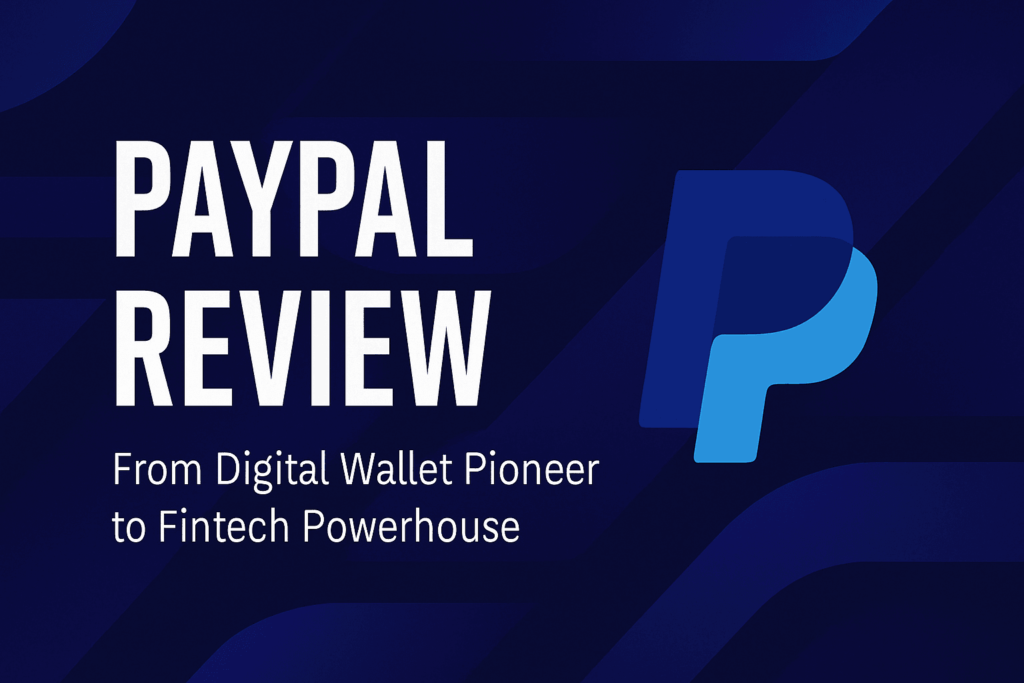Few names are as closely associated with the evolution of digital payments as PayPal. But people still ask… Is PayPal fintech?
Once a startup disrupting the online auction scene, it has grown into a global fintech giant, handling over a trillion dollars in annual payment volume. It has become synonymous with sending money online, offering both convenience and trust. But PayPal is more than just a payment button.
In 2025, it is a platform spanning personal finance, business solutions, and international commerce. From peer-to-peer transfers and checkout integration to crypto trading and buy now pay later, PayPal continues to expand its reach. This article explores PayPal’s evolution, what it offers today, and how it maintains relevance in a rapidly changing fintech landscape.
The Origins
PayPal began in the late 1990s, originally as a security-focused mobile payments company. It gained prominence after merging with Elon Musk’s X.com and pivoting to email-based payments. Its breakthrough came through eBay, where it became the default method for buyers and sellers to transact.
By 2002, it had gone public and was quickly acquired by eBay. For over a decade, the two were closely linked. However, PayPal’s ambition extended beyond marketplaces. In 2015, it split from eBay to pursue a broader fintech strategy, and never looked back.
Today, PayPal operates in more than 200 markets, supports over 100 currencies, and serves consumers, merchants, and developers alike. Its user base exceeds 400 million accounts.
What PayPal Offers in 2025
At its core, PayPal still allows users to send and receive money using email or mobile numbers. But its product suite has grown far beyond that. Users can now pay for goods online, split bills with friends, or manage subscriptions through a unified wallet.
For businesses, PayPal offers merchant accounts, invoicing, recurring billing, and payment processing. Sellers can accept card payments, manage fraud, and integrate with platforms like Shopify and WooCommerce.
Newer features include PayPal Pay Later, allowing users to split purchases into interest-free instalments. The app also includes budgeting tools, loyalty rewards, and crypto trading for supported currencies. In some countries, PayPal even offers high-yield savings accounts or credit services.
The platform is becoming more like a financial operating system, connecting users with tools to spend, save, invest, and manage money. All without needing a traditional bank.
PayPal for Consumers
PayPal’s strength lies in trust and ease of use. Consumers value the brand’s reputation for security and its purchase protection policies. The interface is intuitive, the experience is smooth, and the service is well-supported.
Users can shop online without exposing card details. They can link multiple funding sources, manage payments across platforms, and use a single login to pay anywhere PayPal is accepted.
The mobile app consolidates spending activity, account balances, and recurring payments. It also supports contactless payments in some regions, allowing PayPal to compete with mobile wallets like Apple Pay and Google Pay.
Peer-to-peer transfers remain a core feature. Whether splitting dinner or sending birthday money, it makes moving funds between individuals frictionless and free in many cases.
PayPal for Businesses

For small and medium businesses, PayPal is more than a payment method, it is a full service provider. Merchants can accept payments online or in person using QR codes or card readers. PayPal also supports invoicing, reporting, and customer management.
The platform’s strength is reach. Businesses using PayPal can sell globally with confidence. Currency conversion, chargeback handling, and local compliance are built in.
PayPal offers integrations with e-commerce platforms, accounting tools, and CRM systems. It also powers branded checkouts, subscription billing, and marketplace payouts.
The company has invested heavily in merchant services, offering working capital loans and instant withdrawals. For entrepreneurs, it can replace or supplement traditional banking infrastructure.
Innovation and Competition
PayPal continues to innovate while fending off fierce competition. Rivals include dedicated payment processors like Stripe, digital banks like Revolut, and mobile wallets with regional dominance. Super apps in Asia and open banking in Europe present additional challenges.
In response, PayPal has made acquisitions. That is including Honey for shopping rewards and Paidy for BNPL services in Japan. It also launched its own stablecoin and expanded crypto services, appealing to younger users and investors.

The company has adopted APIs and embedded payment capabilities to stay relevant to developers and platforms. It has also doubled down on data security and compliance, crucial for maintaining trust at scale.
Innovation is no longer optional. PayPal must balance agility with scale to maintain its leadership position.
The Global Impact of PayPal
PayPal’s global footprint is significant. In emerging markets, it offers cross-border remittances and access to international commerce. In developed economies, it supports gig workers, remote teams, and digital nomads.
It has helped democratise payments, reduce reliance on banks, and empower entrepreneurs. It has also advocated for responsible financial services and digital inclusion.
Critics note that fees for currency conversion or business accounts can be high. Others question the centralised control the company has over user accounts and fund access. Still, its scale and utility remain unmatched.
PayPal has changed how the world transacts, and continues to shape the future of digital finance. It has grown from a simple payment processor into a fintech ecosystem serving hundreds of millions. PayPal has remained relevant through reinvention, partnership, and user trust.
Its future will depend on maintaining that trust while embracing change. With new entrants, new technologies, and rising user expectations, PayPal must evolve without losing what made it essential in the first place.

